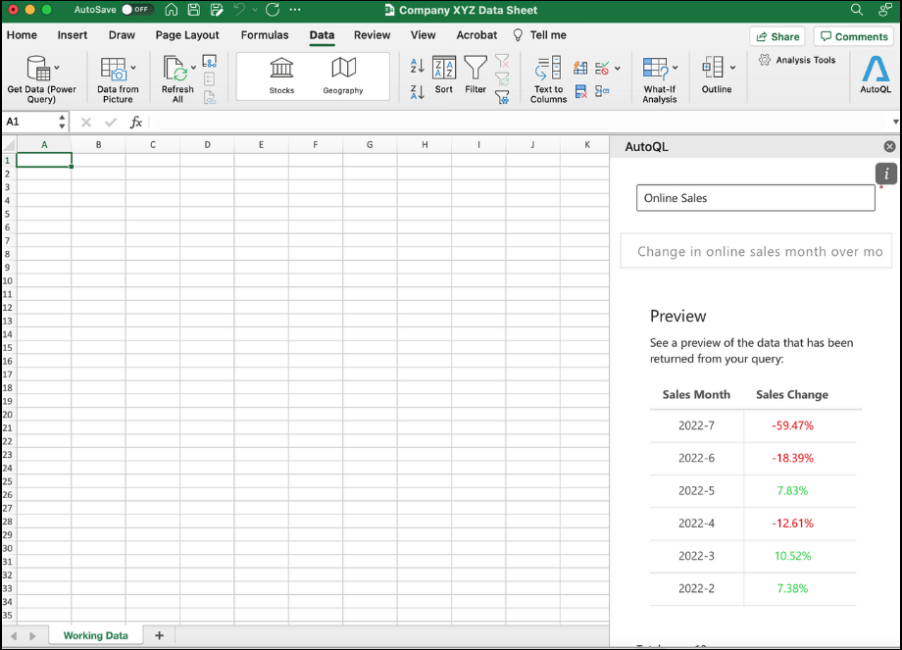~3 minute read
In the retail sector, analyzing data to understand consumer behaviour is essential to business performance. Most markets are price-sensitive to some degree, whether the retailer sells grocery items, clothing, or anything in between. The extent to which consumers are sensitive to pricing varies between markets and the products and services being offered by the vendors in that space. The general assumption is that lower prices equal higher purchase rates. But this isn’t always the case, and only data can tell the whole story.
It’s critical for marketers to explore the impacts of price elasticity on their products or services. This knowledge will help them optimize price points for profit while making informed predictions about subsequent consumer behavior. They must be empowered to pull data directly from a trusted source of truth to understand how such trends impact the business, how customers may be affected, and what actions can maximize profits.
The AutoQL Add-In for Microsoft Excel is built to enable individuals to quickly search, access, and analyze data directly from their data warehouse or lakehouse, simply by asking queries in natural language. This makes it possible for business users to quickly and easily bring relevant data into Excel to gain insights into key data points like consumer behavior, historical sales, or price elasticity. Responses returned from these queries can then be explored to uncover critical insights and spur further analysis.

AutoQL allows business users to quickly and accurately pull important information into Excel for analysis.
In retail, certain product sales tend to be more immediately and dramatically affected by price elasticity. Consumers often turn to substitute options when prices increase for a particular item and substitutes are readily available. This trend is reflected in products like grocery produce, where seasonality impacts the cost of various fruits and vegetables, and consumers tend to change their buying patterns in response.
Analyzing historical sales can be especially helpful in understanding the impact of pricing on consumer buying behavior in particular seasons, enabling marketers to be more effective in marketing such products to consumers.
We can explore another example by considering the luxury retail space, which has historically shown relatively low-price elasticity and consistent consumer buying patterns over time, especially compared to non-luxury retail equivalents. Companies can achieve non-elastic pricing by understanding the desires of the consumer and developing products that meet those unique needs while differentiating from other products in the market. But even with this understanding, marketers still need to monitor pricing and market trends closely. If competitors in the space offer compelling and comparable substitutes, even the most loyal consumers may become increasingly sensitive to prices. Marketers must be agile and responsive to keep their
Accessing data through AutoQL makes analysis more efficient and streamlined. With direct line to data, business users can quickly create new financial models or plug their data into existing ones. User-friendly features like filtering and one-click drill-downs empower users of any technical ability to easily adjust variables and dive into details to interpret the data holistically and make insight-informed recommendations.

